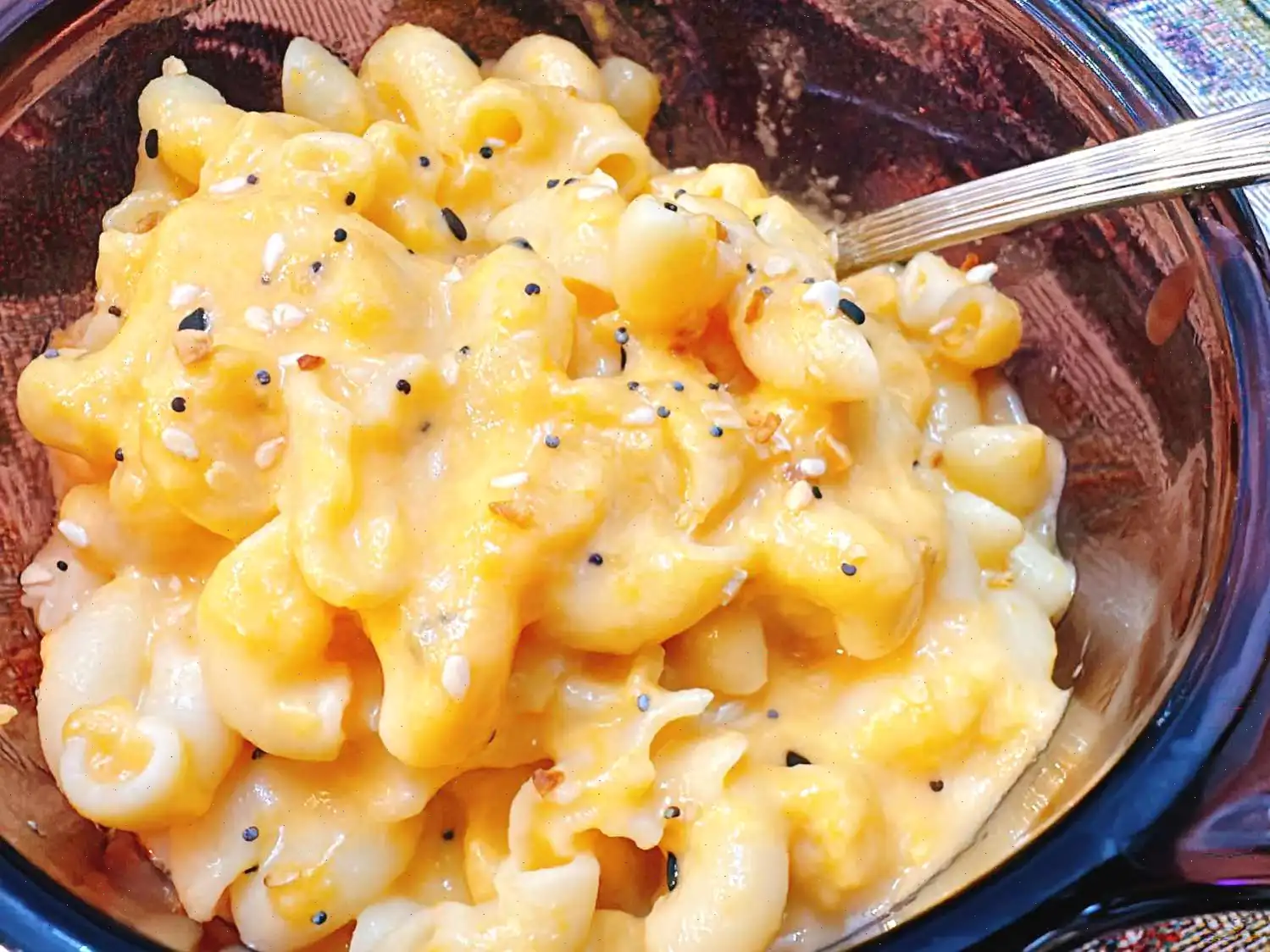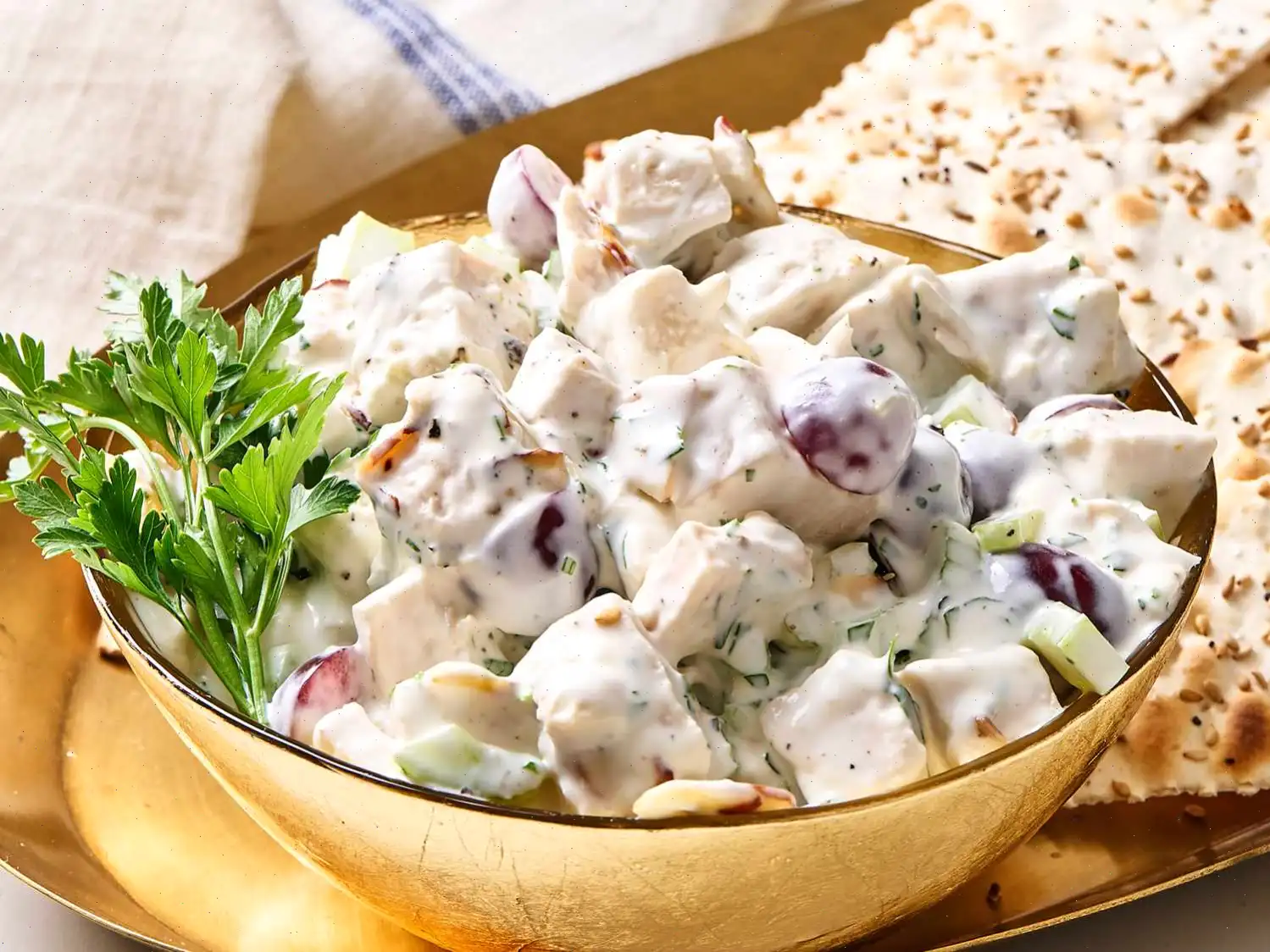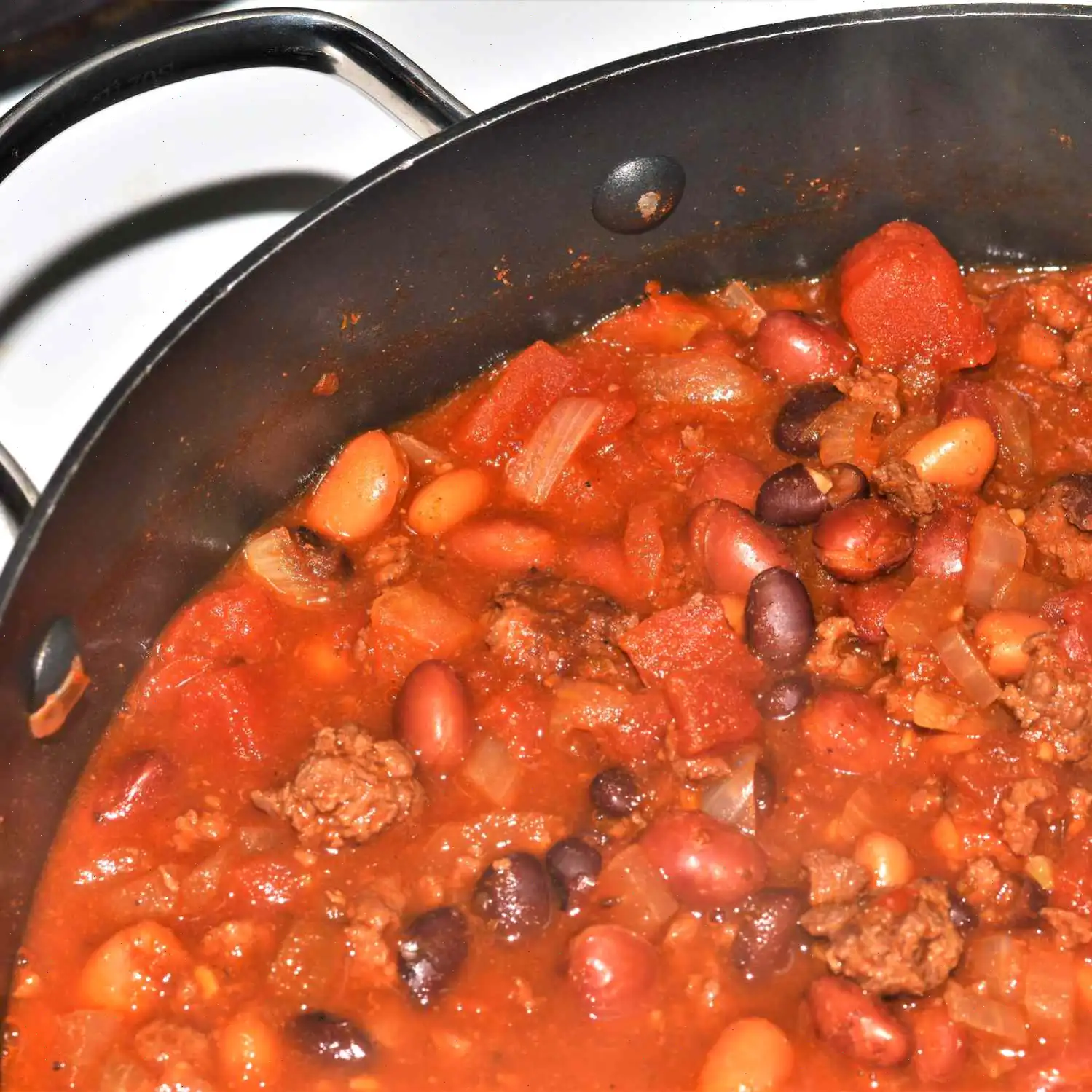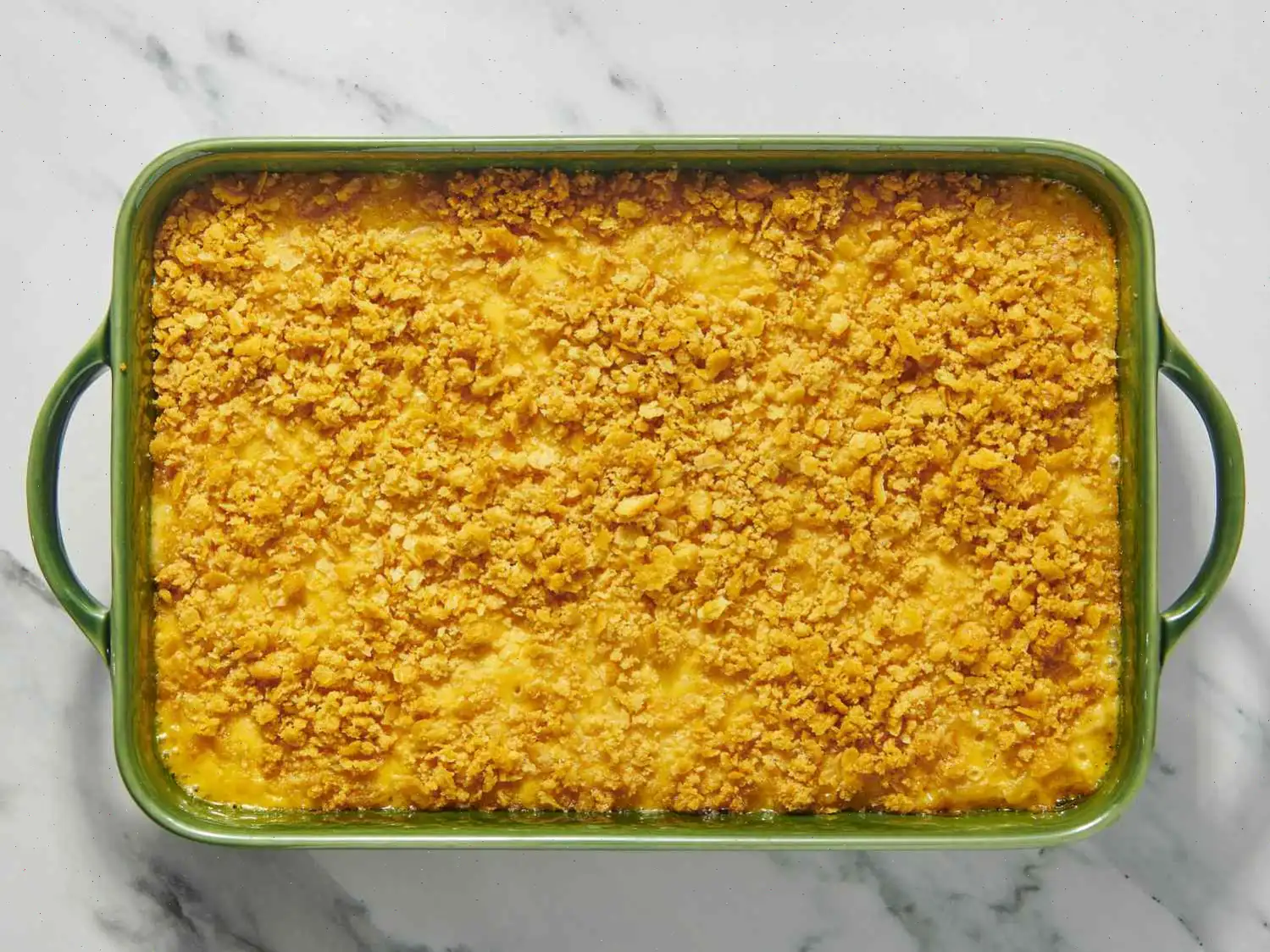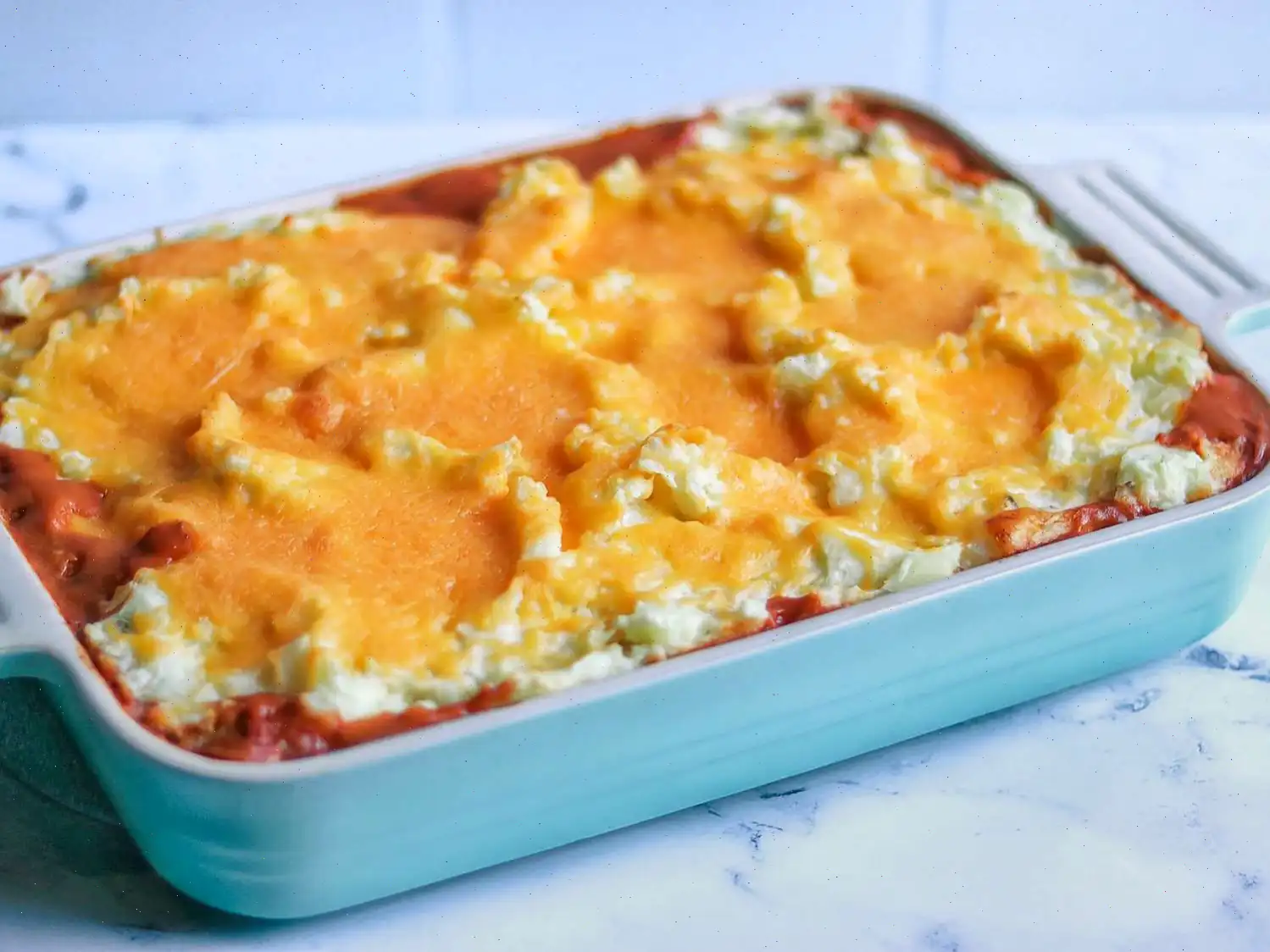
High Protein Cottage Cheese Mac and Cheese Recipe
Ingredients
This recipe is designed for a single serving. Quantities will adjust automatically for larger batches, though cooking times and steps remain the same.
- 1/2 cup high-protein elbow pasta (such as Banza chickpea pasta)
- 1/2 cup high-protein cottage cheese (such as Good Culture)
- 1 ounce Cheddar cheese, grated
- 1/2 ounce Parmigiano Reggiano cheese, grated
- 1 tablespoon Cheddar cheese powder (optional)
- 2 tablespoons high-protein 2% milk (such as Fairlife)
- 1 dash Worcestershire sauce
- 1/4 teaspoon Dijon mustard
- Salt and freshly ground black pepper, to taste
- 2 teaspoons everything bagel seasoning blend
Directions
- Bring a large pot of salted water to a rolling boil. Add the pasta and cook until tender but still slightly firm, about 7 minutes.
- While the pasta cooks, combine the cottage cheese, grated Cheddar, Parmigiano Reggiano, Cheddar cheese powder (if using), Worcestershire sauce, Dijon mustard, and milk in a food processor or high-powered blender. Season with salt and pepper.
- Blend the mixture until it forms a smooth, creamy sauce.
- Drain the pasta and return it to the pot. Pour the cheese sauce over the pasta and stir to coat evenly.
- Sprinkle everything bagel seasoning over the top and mix gently.
- Serve immediately while warm and creamy.
Nutrition Facts (per serving)
- Calories: 1122
- Fat: 28g (36% DV)
- Saturated Fat: 13g (65% DV)
- Cholesterol: 73mg (24% DV)
- Sodium: 4293mg (187% DV)
- Total Carbohydrate: 156g (57% DV)
- Dietary Fiber: 18g (66% DV)
- Total Sugars: 27g
- Protein: 62g (124% DV)
- Vitamin C: 3mg (4% DV)
- Calcium: 873mg (67% DV)
- Iron: 10mg (54% DV)
- Potassium: 1174mg (25% DV)
* Percent Daily Values are based on a 2,000-calorie diet. Nutrient information may vary depending on ingredient brands and preparation methods. Consult a healthcare professional if following a medically restrictive diet.
The Story Behind High Protein Cottage Cheese Mac and Cheese
Macaroni and cheese has long been a staple of comfort food in the United States, tracing its roots back to the 18th century. Thomas Jefferson is often credited with popularizing the dish after encountering similar pasta and cheese recipes in Europe, particularly in Italy and France. Traditional mac and cheese relied heavily on rich cheeses like cheddar and creamy bchamel sauces. Over time, as dietary preferences shifted toward healthier options, innovative versions emergedone of which is the high-protein cottage cheese variant. By incorporating cottage cheese and high-protein pasta, this version maintains the creamy indulgence of the classic while offering a substantial protein boost for modern diets.
Regional Variations and Characteristics
While macaroni and cheese is quintessentially American, regional adaptations highlight local ingredients and flavor preferences. In the South, it often includes a baked topping of breadcrumbs and sharp cheeses, whereas Northern versions tend to be creamier and stove-top prepared. High protein cottage cheese mac and cheese blends these traditions with a nutritional twist. In urban health-conscious areas, chefs may incorporate plant-based high-protein pasta or spice blends like everything bagel seasoning, creating a fusion that retains comfort-food familiarity while catering to contemporary tastes.
How It Differs From Similar Dishes
Unlike classic macaroni and cheese, which relies primarily on cheddar or other aged cheeses and heavy cream, this high-protein version uses cottage cheese and protein-enriched pasta. This adjustment reduces fat content while significantly increasing protein, making it more suitable for those focused on fitness or muscle maintenance. It also avoids excessive starchiness, providing a lighter, creamier texture without sacrificing richness. Additionally, the addition of unique seasonings, such as everything bagel seasoning, distinguishes it from standard mac and cheese, giving it a subtly savory and aromatic profile.
Where Youll Usually Find It
High-protein cottage cheese mac and cheese has found a niche in both home kitchens and modern cafs focused on healthy eating. It is often featured on menus in gyms, wellness cafs, and casual restaurants emphasizing nutritious comfort food. It can also be served as a hearty lunch or dinner option, particularly in meal-prep plans or high-protein diets. Unlike traditional mac and cheese, which is a common side dish at potlucks or holiday dinners, this variant is marketed as a full, balanced meal due to its protein content.
Interesting Facts
- Protein-enriched pasta, often made from chickpeas or lentils, is the foundation for this dish, providing up to twice the protein of traditional wheat pasta.
- Cottage cheese not only boosts protein but also creates a creamy texture without needing heavy cream or excessive butter.
- The everything bagel seasoninga mix of sesame seeds, poppy seeds, garlic, onion, and saltadds an unexpected twist to a classic recipe, enhancing both taste and aroma.
- This dish appeals to both traditional mac and cheese lovers and fitness enthusiasts, bridging comfort food with modern nutrition trends.
- High-protein variations of classic comfort foods like this are becoming increasingly popular in the U.S., reflecting a broader trend toward functional meals that combine taste with health benefits.


